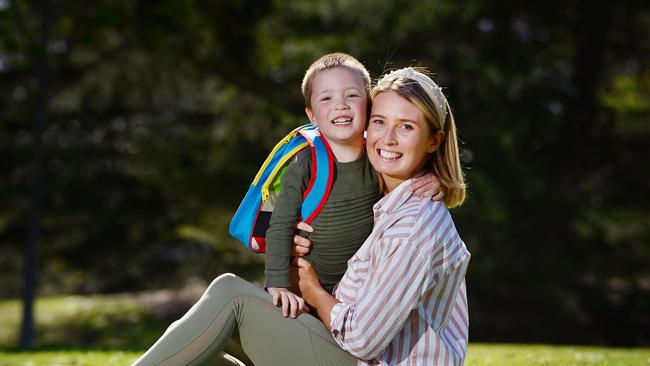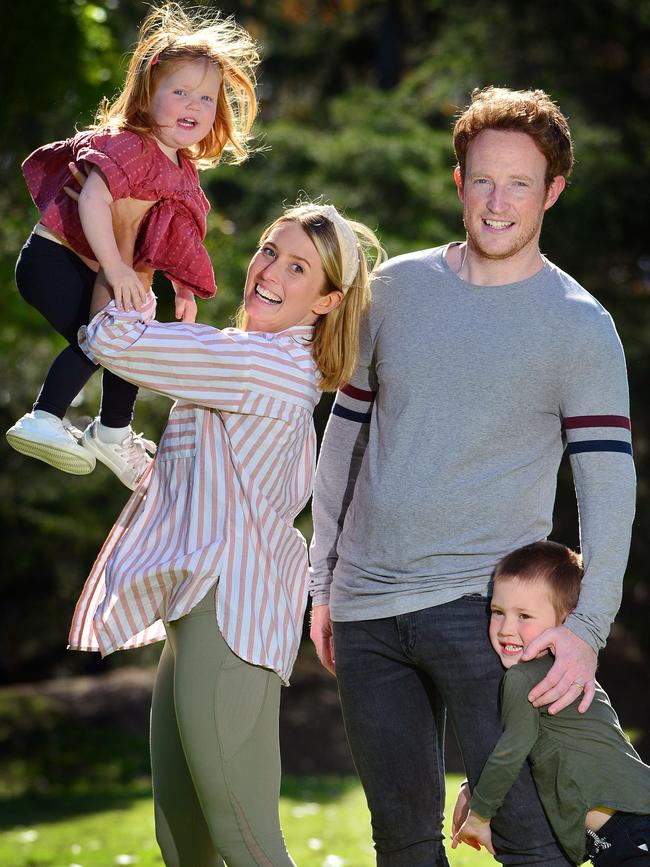Primary schools to re-open as infection rates among children revealed
A traffic light system of COVID safety could be brought in for schools to help them reopen safely. The colour coding plan would indicate risk level, with data showing young children are less likely to spread the virus.
HS Coronavirus News
Don't miss out on the headlines from HS Coronavirus News. Followed categories will be added to My News.
A traffic light system could be implemented for schools to get them open and keep them that way.
The plan, which is based on models from overseas, would see green, yellow, orange and red colour coding depending on risk and require different safety measures accordingly.
It aims to keep schools open while containing outbreaks and keeping students, staff and community safe.
The categories would also take into account coronavirus cases in the surrounding community, after research from the Murdoch Children’s Research Institute found that was the biggest factor in
Under the model the lowest level primary schools could achieve is “Green” which means they would only have to undertake standard precautions such as hand hygiene, physical distancing and enhanced cleaning.
Secondary schools without COVID-19 will be considered “Yellow”, facing the additional requirement of masks for students, enhanced social distancing and bans on singing, indoor sports and wind instruments.
Cases in the community could see a school move to “Orange” status which would cut attendance to 50 per cent.
If there are identified cases and a school entered the “Red” category they will have to consider closing.
When schools reopen in metropolitan Melbourne it recommends they all be classified “Yellow” with an “Orange” status for Years 7-10.
Regional schools would move quickly to “Green” when Victoria takes it third step on the road map to recovery with all metropolitan schools moving to “Yellow”.
All metro schools would move to “Green” status when Victoria is on its final step out of restrictions.

Key to the October 12 school return is MCRI analysis of Victorian infection data, which found that even when children were infected in the wider community their presence in classrooms and childcare rarely resulted in any further transmission.
While previous modelling calculated that children under 10 were 71 per cent as infective as adults, the new MCRI research places their infectivity at 51 per cent – meaning they have only half the chances of passing the virus on as an adult.
It also found Victorian schools were on average closed within 48 hours of confirmed COVID-19 cases.
As a result two-thirds of school outbreaks never spread beyond a single case, while 91 per cent involved fewer than 10 cases.
Critically it also found cases in childcare or schools were very rarely then linked to infections in vulnerable populations like the elderly.
The MCRI analysis found so far 337 of Victoria’s one million Victorian school students – or 0.03 per cent – may have caught COVID-19 as part of a school outbreak.
Of that number only four students required hospital treatment and all recovered.
They found risk reduction strategies as well as rapid closures, contact tracing and cleaning made schools “unlikely” to drive transmission and serious infections were rare in both students and staff.

After reviewing all COVID-19 cases across Victorian schools and childcare centres up to August 31, MCRI’s Prof Sharon Goldfeld said reopening them had to be a “priority”.
“Closing schools should be a last resort, especially for childcare and primary school children as cases in this age group are less likely to transmit and be associated with an outbreak,” Prof Goldfeld said.
Primary school students will return to Melbourne classrooms in a fortnight, however the majority of high school pupils face further weeks of remote learning.
Melbourne parents are also celebrating as childcare centres are reopened to all children from today.
Students from prep to grade six, as well as those attending special schools and studying VCE or VCAL will return to at least some days of on-site learning from October 12.
The moves follows new Murdoch Children’s Research Institute findings that young children are less infectious than previously believed, while Victorian schools have rarely driven COVID-19 outbreaks.
Premier Daniel Andrews this morning (MONDAY) foreshadowed further announcements relating to how schools would be managed, but would not confirm whether the proposed traffic light system would be used to re-open high schools and managing outbreaks across the education system.
Mr Andrews said the October 12 resumption of face-to-face learning at primary schools enabled time to refine plans at a local level for individual schools, as well as wider arrangements across the education system.
“It makes sense that they are in a different place as it relates to infectivity and transmission,” Mr Andrews said.
“If we’ve gotta make further announcements and refinements we do have time.
“I am confident that we can get primary schools open and we can keep them open but, the finer details of that … we will leave some of these matters to schools because they know their local environment best.

“We also have time so I can’t rule out some further announcements.”
However, Victoria’s Deputy Chief Health Officer Prof Allen Cheng said the wider MCRI findings had been included in updated University of Melbourne modelling paving the way for a return to face-to-face learning.
“Primary schoolchildren are at a lower risk of getting and spreading coronavirus infections – this isn’t to say that they can’t get infected or they never get unwell, but their risk is lower,” Prof Cheng said.
“For secondary school students we are not quite so sure about the risk and we are still doing further work on this.
“We still need to be careful. School will still need to be prepared, parents and children will still need to monitor their health carefully and not send students to school if they’re unwell.”
Bentleigh mum Emma McGuire, who usually has her kids Bobby, 3, and Elle, 2, in childcare three days a week said the move took a massive burden off working parents.
“I am so thrilled I can’t tell you it’s been a really, really challenging couple of months just trying to balance work and looking after them and feeling torn between doing the work and not giving them enough attention,” she said.
To view the MCRI analysis click here: COVID-19 in Victorian schools
MORE NEWS
WHAT YOU CAN AND CAN’T DO UNDER STEP TWO
LABOR MPS LEFT ‘DISGUSTED’ BY ANDREWS’ TREATMENT OF MIKAKOS
